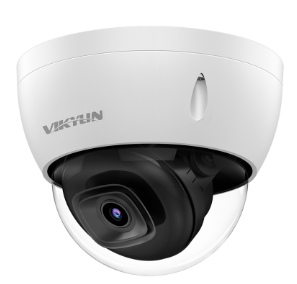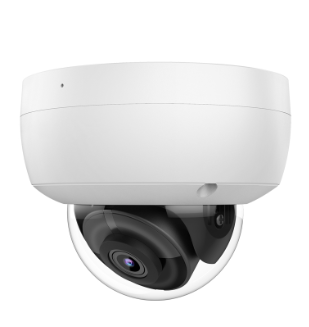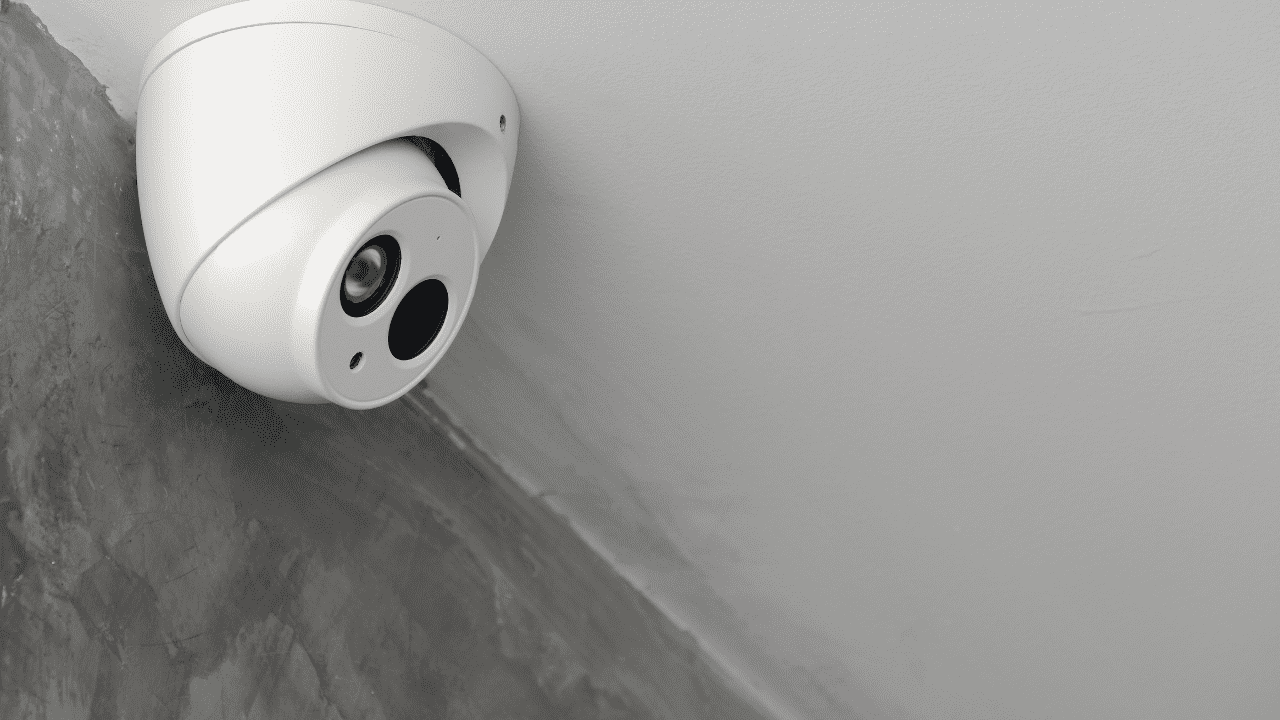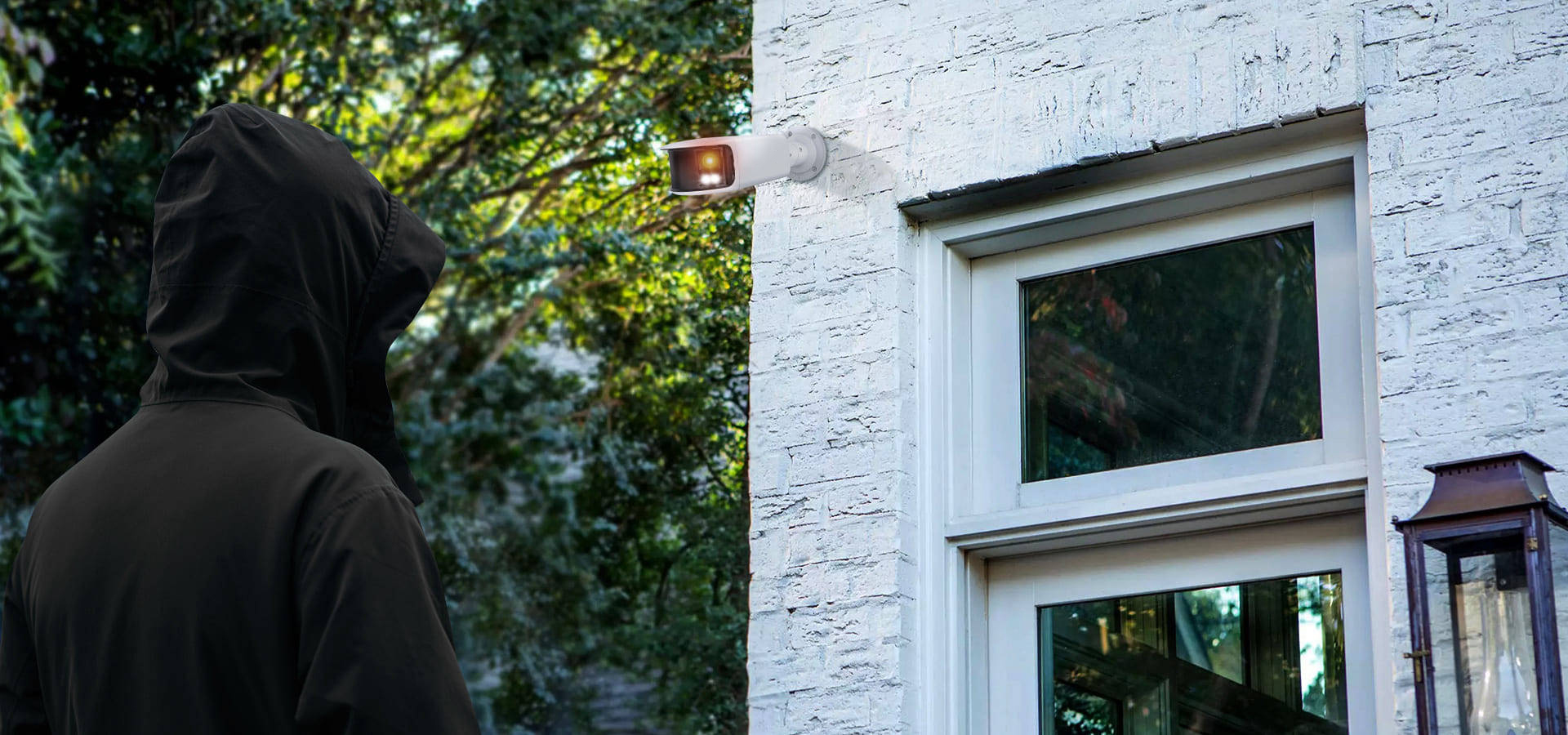What’s the difference between a resolution listed in “MP” and “K”?
The difference between referencing resolution in terms of “MP” or using measurements expressed in “K” is a bit like the difference between saying “Hello” and “Hola”. Using that analogy, we could say “MP” is the language of camera lenses, while “K” is the language of display screens.
Though this language is becoming dated because as you will notice, the language in which we use to talk about security cameras and their resolutions is changing. But at the end of the day, and after some math to do the translations, you will discover “MP” and “K” are just different abbreviations to express the number of pixels on an image, which will always be listed using a length by width format.
What does 4MP Resolution actually mean?

“MP” is the amalgamation, so to speak, of two words. “Mega”, which is short for “million”, and “pixel”, which is the shortened combination of “picture” and “element”. Let’s first start with the pixel–a pixel can best be described as the smallest controllable element of a picture represented on the screen, or a minute area of illumination on a display screen, one of many from which an image is composed. A Megapixel (MP) should be thought of as a unit of graphic resolution that’s equivalent to roughly one million pixels.
Therefore a 4MP security camera image is composed of roughly 4 million pixels. The most common 4MP resolution is 2592 pixels wide by 1520 pixels high, which could also be expressed as 2592*1520. 4MP ip cameras offer a higher video quality than 1080p models, allowing your 4MP video security camera image to capture more video information for the area it’s watching–and is perhaps a better tool when it comes to identifying intruders or other security threats. In case it comes up at your next office party in a conversation about which security cameras to buy, 4MP security surveillance cameras have 3,939,840 pixels, compared to a standard 1080p television which has only 2,073,600 pixels.
What does 4K Resolution actually mean?

To start in the same spot we did with the meaning of “MP”, we should mention that “K” comes from the French, and their nomenclature for the metric system, who borrowed it from the Greeks as prefix for “kilo”–meaning “thousand”. However, in this context 4K does not mean a total of 4,000 pixels. That would be too easy. It would also make for a really low resolution in modern terms. 4K, as you will see below, actually refers to the number of pixels across the image or display.
Though 4K is most commonly used when referring to the number of pixels on a display screen, it’s increasingly used to describe the number of pixels–and now resolution–of high-end security cameras. Unfortunately, 4K can refer to one of two high definition resolutions: 3840 x 2160 pixels or 4096 x 2160 pixels. The higher of the two resolutions being primarily used in commercial digital cinema, and the lower resolution commonly used for consumer products–such as security cameras, Ultra HD, and UHD television sets.
If you’re interested in doing a Cliff Clavin impersonation (the know-it-all from the old TV sitcom series “Cheers”), a 4K security camera or TV, would have the same resolution as an 8MP security camera. That means both 4K and 8MP correspond to the same number of pixels: 8,294,400 pixels.
How does 4MP security camera compare to 4K pOE security camera?
Considering all the other features are equal, there would be no comparison between a 4MP and a 4K security camera. There is in fact, a clear winner.
4MP vs 8MP 4K Security Cameras
- 4MP Security Cameras: 25921520 – 3,939,840 pixels
- 4K Security Cameras: 38402160 – 8,294,440 pixels
After all, how could you compare 3,939,840 pixels to 8,294,440 pixels? As anyone could see, if that’s all there was to it, the clear winner is the 4K camera with it’s considerably higher resolution and pixel count. How could you go wrong with twice as many pixels? Or, is “4K better than 4MP?” really the question you should be asking in the first place?
Though it’s clear that a 4k camera has twice the number of pixels of a 4MP camera, when considering which camera is right for you I’d really urge you to ask the question “What’s the best camera for my situation?” instead of asking “Which security camera has the best resolution?”
As resolution is just one feature of a security camera, your particular surveillance need may require you to prioritize other features over resolution. Therefore, spending more of your budget on a feature that’s not as critical as another would needlessly eat up your funds and not accomplish the goals that may have lead to your decision to install a security camera system to begin with.
A few key features of security cameras that you may want to consider in addition to resolution would be:
- Wide Dynamic Range (WDR)
- Power Over Ethernet (PoE)
- Frame Rate (FPS)
- Video Compression
- Remote Focus Lens
- Vandal-Resistant
- Tamper Detection
- Ingress Protection Rating
After you’ve considered all of the other factors, (sans resolution) if you’ve still decided that your location calls for the highest resolution possible–a 4K security camera with the right features can make a huge difference whether you’re watching a car dealership, busy parking lot, or city park. The amount of detail a properly configured 4K camera can capture often equals money well spent if your location calls for highly detailed video recordings.
What is 1080p and is it still relevant for security cameras?
As in the case of “4K”, the “1080” refers to just one of the screen measurements, the height. Most people still associate “1080” with High Definition TV (HDTV) whose exact measurements are 1920×1080 pixels with a 16:9 aspect ratio. This standard was a game-changer when HDTV units were first introduced in the 1990s.
To put this into a modern perspective, a 1080p device is equivalent in resolution to a security camera of about 2MP. A 4MP security camera, however, would have twice the resolution as 1080p with 4K being four times higher.
In today’s world, it could be argued that when a company touts the terms “1080p” or “HD” along with a security camera they are doing so more for the “name recognition” such terms bring, rather than for the high-end performance they once implied. They may be counting on their audience to be at best: very budget conscience, and at worst: ill-informed regarding how far security cameras have come in terms of resolution capabilities.
Is 1080p the same as HD? And what is UHD?
It would be accurate to associate 1080P and the resolution of 1920 x 1080 with both the terms “HD” and “HDTV”. But keep in mind, some marketing material for low-end consumer security cameras may also associate the terms “HD” with the older and lower resolution found in “720p” cameras even though the 720p resolution is a much lower 1280 x 720 pixels. While resolutions of 720p products were at one time almost state of the art, in the years since 720p has pretty much become obsolete. Outside of budget constraints, or the theory that any security camera may be better than none at all, cameras touting an “HD resolution” of 720p should be avoided.
In regards to the term “UHD”, where the “U” stands for “Ultra”, although it sounds relatively close to “HD”, there is a world of difference between the two resolutions. Where, as mentioned above 1080p was once the king of high definition with its resolution of 1920 x 1080, the new standard for high def is quickly shifting to UHD, also called Ultra HD, or 4K. With the increased resolution of 3840 x 2160 we expect 4K security cameras to be the new standard for some time. Their successor however, 8K UHD, is already looming on the horizon. 8K UHD (7680 × 4320) is the highest resolution defined in the Rec. 2020 (UHDTV) standard.

What does aspect ratio mean and how is it related to a security cameras resolution?
Since security camera and screen resolution measurements are always expressed using width x height in pixels, the aspect ratio refers to the relationship between those two measurements of an image. If you are not familiar with the term “ratio”, think of it as simply comparing one size, the width, to the other size, the height. As an example, you might need to compare the number of boys to the number of girls in a classroom. If there were 20 boys and 10 girls in the classroom the ratio of boys to girls could be expressed as two to one, or 2:1.
When you compare the number of pixels in the width to the number of pixels in the height, of a standard 4MP camera, you would get an aspect ratio of 16:9, or 16 pixels in width for every nine pixels in height. In addition to being the most common aspect ratio today, as this is the most common ratio for large screen HD Television Displays, the aspect ratio of 16:9 is also close to the “Golden Ratio”. The Golden Ratio is a concept introduced by the ancient Greeks. In the world of mathematics, the numeric value is called “phi”, named for the Greek sculptor Phidias. The “Golden Ratio” exists somewhere between 16:10 and 16:9, and some artists and architects believe this ratio makes the most pleasing and beautiful shape.
For a quick reference on security camera aspect ratios see the following list:
- 1MP (720p) – 16:9
- 1.3MP – 5:4
- 2MP (1080p) – 16:9
- 3MP – 4:3
- 4MP (1440p) – 16:9
- 5MP (1920p) – 4:3
- 4K (8MP) (2160p) – 16:9
What does resolution have to do with security cameras?
The relationship between resolution and security cameras is much like the relationship between resolution and television sets. A long time ago, both security cameras and television sets were analog devices. They were not the modern digital HD TV sets or IP security cameras that we take for granted today. Their resolutions were not measured the same way we would measure them today and as you would imagine the resolutions were not even in the same ball-park. In fact, before the year 2000, horizontal lines of resolution–often called “TVL” short for “TV Lines”–was the standard method of measurement for analog video. It was truly another world for displays and security cameras alike.
If you remember those old television sets or even old analog cameras, you will remember a few things about their image, such as you could not zoom in on them (blow them up) after the fact. They simply lacked the resolution (the detail in the picture) to do any sort of after-the-fact “zoom and enhance”–the catchphrase made popular by today’s crime dramas out of Hollywood. In that example, it was the low resolution of the old analog image, commonly 720 x 480, that made this impossible.
As implied above, with the example of not being able to zoom in after the image has been recorded on any low-resolution video, the opposite is true for images produced from modern high resolution ip security cameras. This capability, that could best be explained using the video from a 4K 8MP surveillance camera whose resolution is 3840 x 2160 for a total of over eight million pixels, could allow you to “zoom and enhance” to capture a much higher level of detail in an image than you could from a camera with a lower resolution. It’s not that you can’t “zoom and enhance” images captured from 1080p, 4MP, or other cameras, it’s just that they will pixellate and distort much sooner in the process–because they did not capture the same number of pixels per image, they did not capture the same level of detail. After the fact zoom can be very useful when surveilling large areas or when you need to see a level of detail that lower resolution cameras cannot provide. A few common real-world examples of the detail retrieval available with a 4k (8MP) security camera would be a license plate on a car, the company name or vehicle ID number on a semi-trailer, or even the wording on a t-shirt of a person of interest, all of which might be located at a distance from the camera. It’s impossible to know what level of detail it would take to prove useful information that could help the local police, or solve your own internal issues with inventory or management control, so having the highest resolution camera your budget can afford will give you the most flexibility when it comes to solving your companies security concerns.
How does my camera’s resolution effect storage space?
As the resolution of your security cameras increase, so will the amount of hard drive storage space needed to retain the video. Conversely, as resolution increases, the number of hours of video that can be saved on the same amount of hard drive space will decrease. This is the fundamental relationship between resolution and storage that has existed since the dawn of the digital age.
When stored using the same video codec (an electronic circuit or software that compresses or decompresses digital video) a 4MP image uses roughly twice as much storage space as a 2MP image, while a 4K(8MP) image takes up twice as much storage space as a 4MP image. 1080p uses half the space of a 4MP and 720p uses half of the space of a 1080p image.
To put this in the simplest terms, higher resolution security cameras contain more pixels per individual image they capture, images with more pixels take more storage space on your hard drive. Should you find yourself needing to store more video, perhaps you decide you need to retain months of video, and not weeks as you initially believed, you would simply need to add more hard drives to your Network Video Recorder (NVR).
Still have questions?
Not only can we answer all of your questions, but we will also work with you to offer the best options for your security camera while keeping your project on budget. Contact us!







